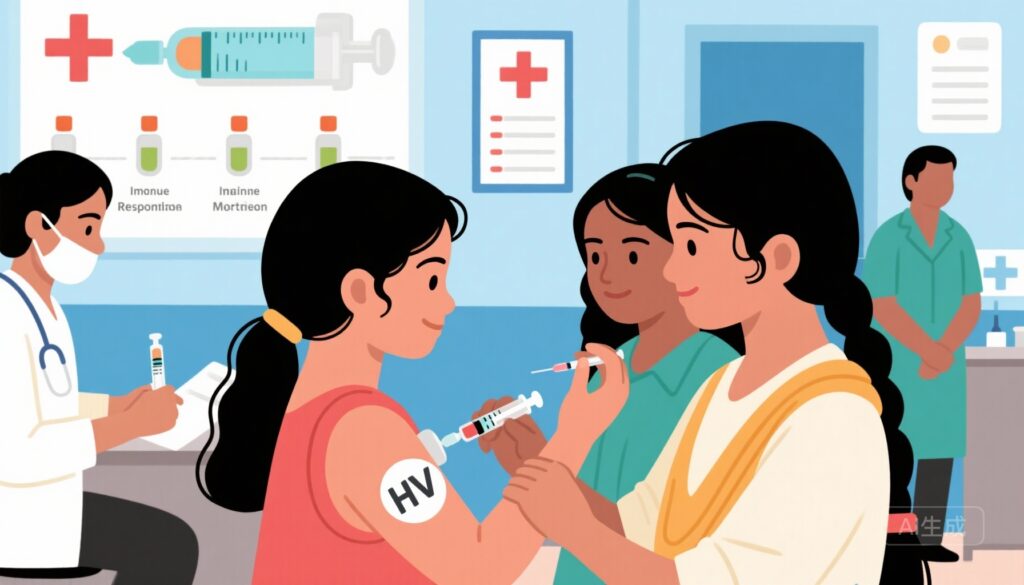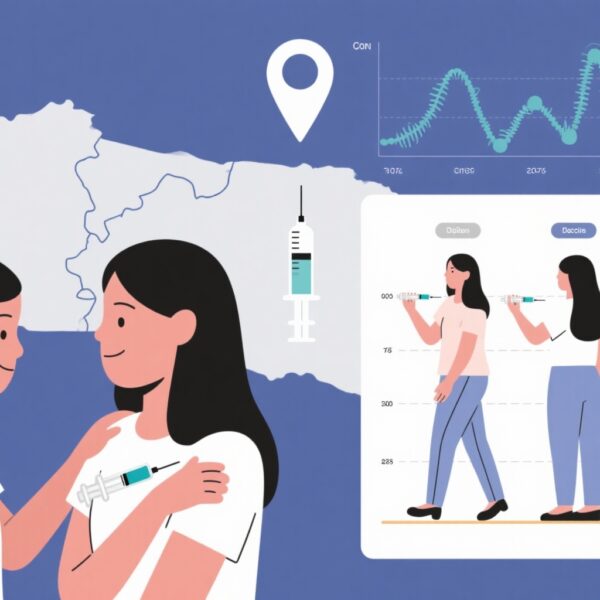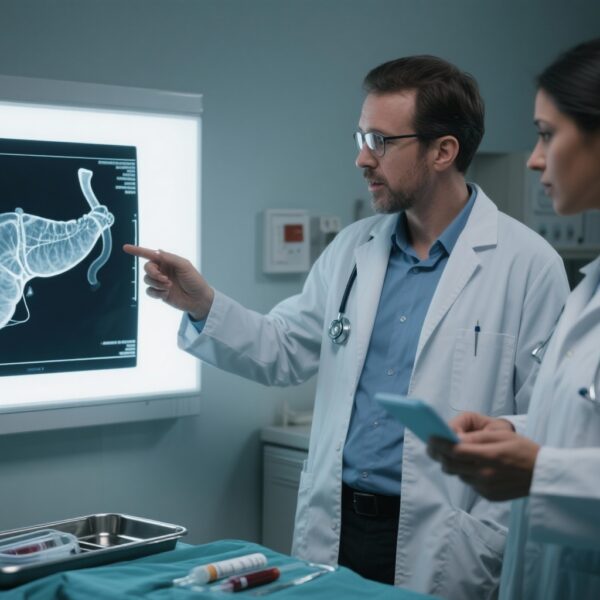Background
Human papillomavirus (HPV) vaccination has become a cornerstone in preventing cervical cancer worldwide. A challenge in global vaccine rollout is the typical three-dose schedule required for the quadrivalent HPV vaccine targeting HPV types 6, 11, 16, and 18. If fewer than three doses can provide equivalent protection, vaccination programs could be simplified and coverage expanded, especially in resource-limited settings.
This multicentre prospective cohort study originating from India examined the immunogenicity — the ability of the vaccine to provoke an immune response — and HPV infection rates following one, two, or three doses of the quadrivalent HPV vaccine among girls aged 10 to 18 years. The initial randomized trial design faced interruptions unrelated to the study, which led to some participants receiving fewer doses than planned. This situation provided a unique opportunity to analyze immune responses and infection outcomes in an observational cohort across varied dosing groups.
Methods
The study was conducted at nine distinct locations comprising 188 clusters throughout India. Eligible participants were unmarried girls aged 10 to 18 years who were recruited before vaccination was suspended temporarily. Participants formed four cohorts based on the number and timing of vaccine doses received:
- Three doses on days 1, 60, and 180 or later
- Two doses on days 1 and 180 or later
- Two doses by default on days 1 and 60
- One dose by default
Primary outcomes focused on immunogenicity, assessed by measuring binding antibody titres specific to L1 genotypes for HPV types 16, 18, 6, and 11, neutralizing antibody titres, and antibody avidity (strength of antibody binding). Incident (new) and persistent HPV infections of the vaccine-targeted types were also tracked through cervical sampling.
The analysis was conducted according to the actual vaccine doses received rather than original assignment. The trial was registered under ISRCTN98283094 and ClinicalTrials.gov NCT00923702.
Findings
Vaccination began on September 1, 2009, and continued until April 8, 2010. Of 21,258 eligible girls identified, 17,729 from 178 clusters were recruited before suspension. Distribution of doses among these girls was:
- 3 doses: 4,348 girls (25%)
- 2 doses (days 1 and 180 or later): 4,979 girls (28%)
- 2 doses (days 1 and 60): 3,452 girls (19%)
- 1 dose: 4,950 girls (28%)
The immune response in the two-dose (days 1 and 180 or later) group was statistically non-inferior to the three-dose group at 7 months post-vaccination, with median fluorescence intensity ratios for HPV 16 at 1.12 (95% CI: 1.02-1.23) and HPV 18 at 1.04 (95% CI: 0.92-1.19). Conversely, the two-dose default group (days 1 and 60) and one-dose group demonstrated lower immune responses at 18 months post-vaccination, with significant decreases in antibody levels.
Interestingly, the geometric mean avidity indices — a measure of antibody binding strength which correlates to immune protection — were non-inferior for all groups receiving fewer than three doses, whether by design or due to default, compared to the three-dose group. Neutralizing antibodies were produced against all four targeted HPV types after fewer than three doses, albeit with lower concentration following just one dose.
HPV infection data based on cervical samples from 2,649 participants revealed similar rates of new HPV 16, 18, 6, and 11 infections regardless of vaccine dose number. Follow-up testing on at least two cervical samples from 838 participants over a median of 4.7 years showed no cases of persistent HPV 16 or 18 infection across any dosing group, suggesting sustained protection. This durability is significant since persistent infection with high-risk HPV types is a critical step toward cervical cancer development.
Interpretation
Despite the challenges introduced by the suspension of vaccination, results strongly support current World Health Organization (WHO) guidelines recommending two doses of HPV vaccine spaced at least six months apart for routine immunization of young girls. The immune response and protection afforded by two doses match closely with three doses over a substantial follow-up period.
Moreover, findings suggest that a single dose potentially offers short-term protection against persistent infection by HPV types 16, 18, 6, and 11 comparable to that seen with multiple doses, though antibody levels are lower. This observation warrants further detailed prospective studies to evaluate if one dose could be sufficient under broader vaccination strategies, which could have a tremendous public health impact by simplifying logistics and reducing costs.
Funding and Acknowledgments
The study was funded by the Bill & Melinda Gates Foundation, a major supporter of global health initiatives, including HPV vaccination programs aimed at cervical cancer prevention in low- and middle-income countries.
Conclusion
This landmark multisite study in India provides critical evidence that supports two-dose HPV vaccination schedules and highlights the promising potential of even a single dose. These data can guide national immunization programs and global health policymakers to optimize HPV vaccine delivery, ultimately reducing cervical cancer burden among women worldwide.
Clinicians and public health officials should consider these findings in conjunction with ongoing research and monitoring to adapt HPV vaccination approaches to local epidemiology, healthcare infrastructure, and cultural contexts.



